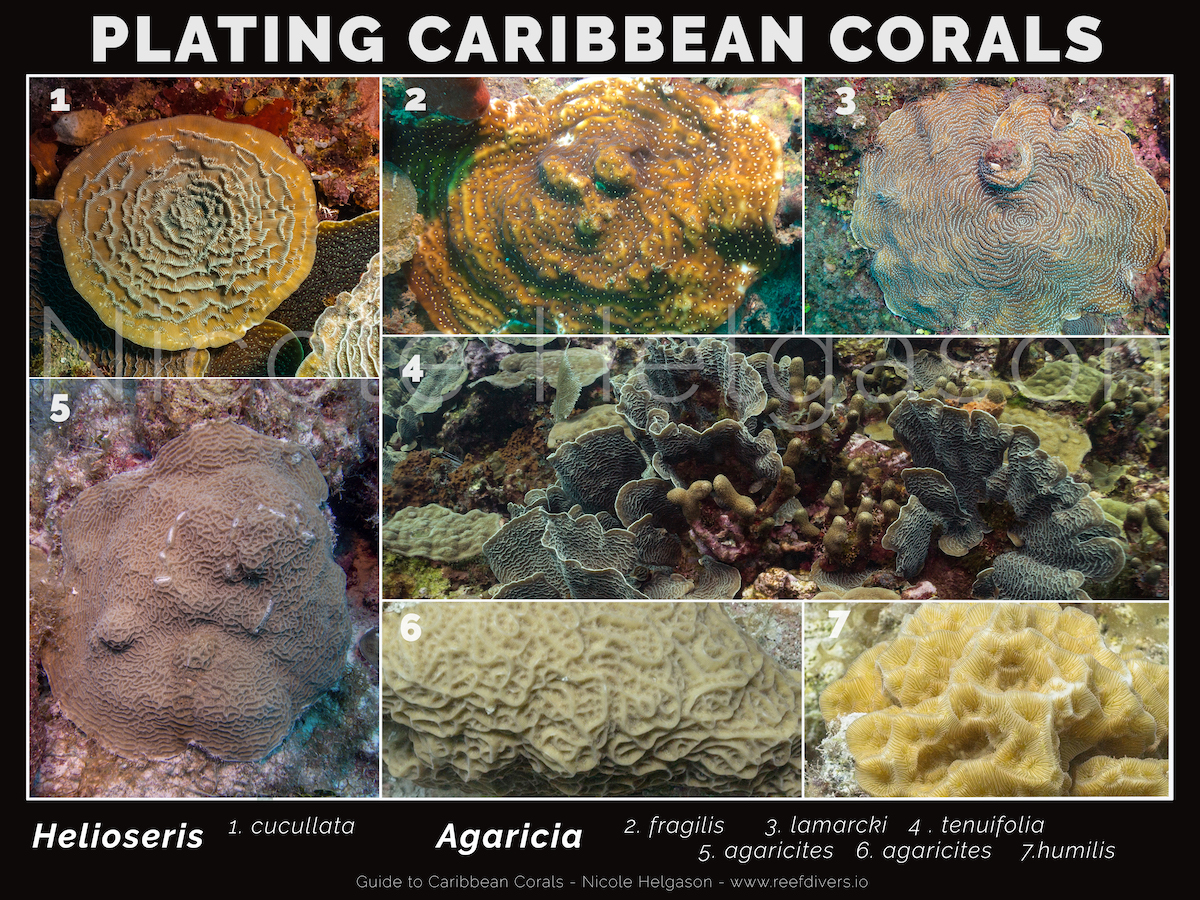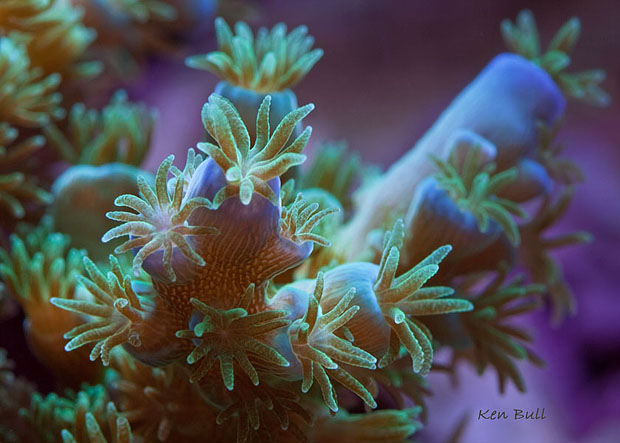Plating Corals
Want to identify a plating coral from the Caribbean? You’ve come to the right place!
We made this quick guide to plating corals so you can easily identify Caribbean species at a glance. Plating corals can either grow outwards from a central point or encrust along rocks with plates growing upwards or outwards from a rock.
In this guide, we cover six types of plating corals. Since this is the quick guide I will give you a few tip to identify each coral and if you want to learn more about each species there is a link describing each one in more detail.
You can find more quick guides here to Branching, Mound, Large Polyp, and Meandering corals. For a full description of each species check out our Guide to Caribbean Corals, and, make sure to follow us on Facebook to stay up to date with all our coralicious content.
Helioseris
Helioseris cucullata is a Caribbean coral with a one of a kind appearance. You can easily spot this coral by the cup or nose-shaped corallite that always points to the exterior of the colony. Helioseris has several growth forms and color combination, but will always have the same distinct outward facing corallite shape.
1. Helioseris cucullata – Sunray Coral
Helioseris is a plating coral so it will be attached at the center and then grow outwards from that point. Sometimes the plates start turning upwards into small spirals or secondary plates creating several layers on a single colony.
Note: If you are looking for this coral in an older coral identification guidebook, or online resources it will most likely be called a Leptoseris. Before 2012 this coral was called Leptoseris cucullata, but after molecular analysis, it was placed in its own genus Helioseris.
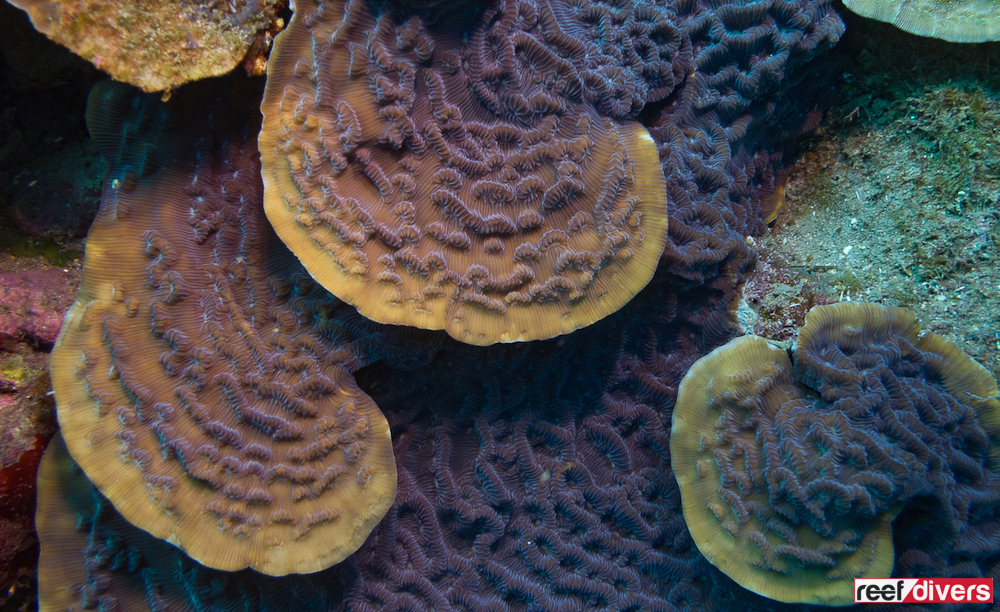
Agaricia
Agaricia is a diverse group of corals and each species can be challenging to tell apart. Even scientist can’t seem to decide where to classify them. Some of the species on the list may be classified as Undaria, but as of the end of 2017 they seem to have switched back to Agaricia. Regardless of scientific classification here are a few quick tips to tell these species apart.
2. Agaricia fragilis – Fragile Saucer Coral
This coral has shallow ridges and valleys with a single set of polyps aligned in even rows. Agaricia fragilis can be difficult to identify because of the many different ways it grows (thin plates, encrusting plates, plats with blades). It can easily be mistaken for other forms of Agaricia and if you are just learning to identify coral this would be a more advanced species. TIP Look for thin plates with brown and orange color.
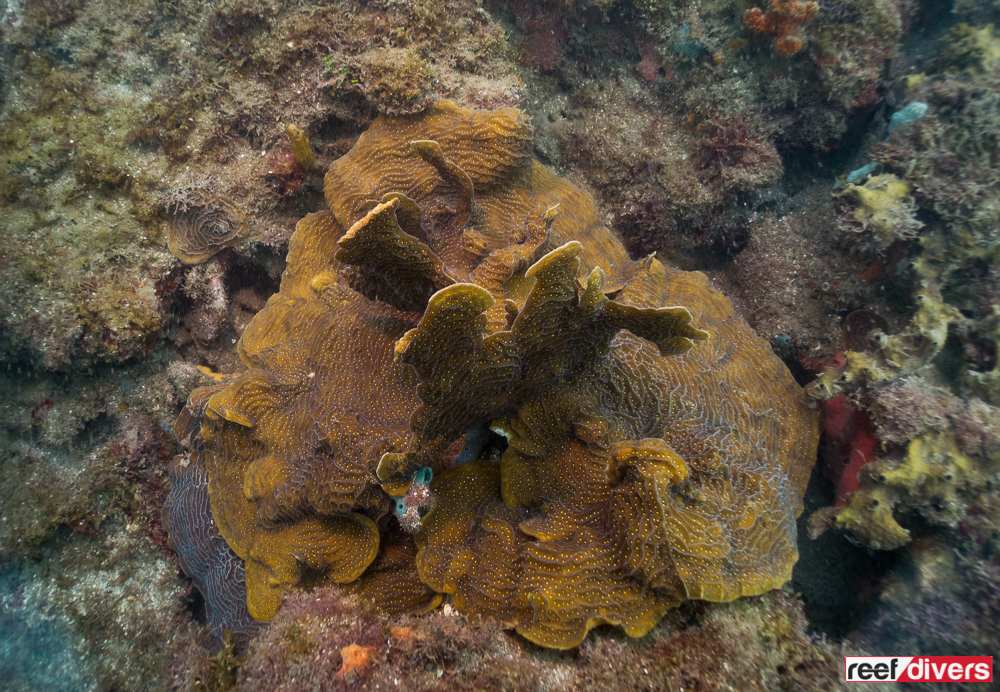
3. Agaricia lamarcki – Lamarck’s sheet coral
Thin sheets, with white polyps is the simplest ways to identify this species. Agaricia lamarcki is a deep water species of plating coral you will find at the lower end of recreational diving limits. You can often find this delicate sheet encrusting on ledges and rocks around 30m (100 feet deep). This coral has distinct white dots which align with the corallites.

4. Agaricia tenuifolia – Thin Leaf Lettuce Coral
Agaricia tenuifolia covers the top of shallow coral ridges growing like a weed. This coral aggressively competes for space on the reef. This is one of those corals which until most recently was classified as Undaria, and our original reefdivers article has it listed under that. But the name is less important than just recognizing this abundant leafy species.
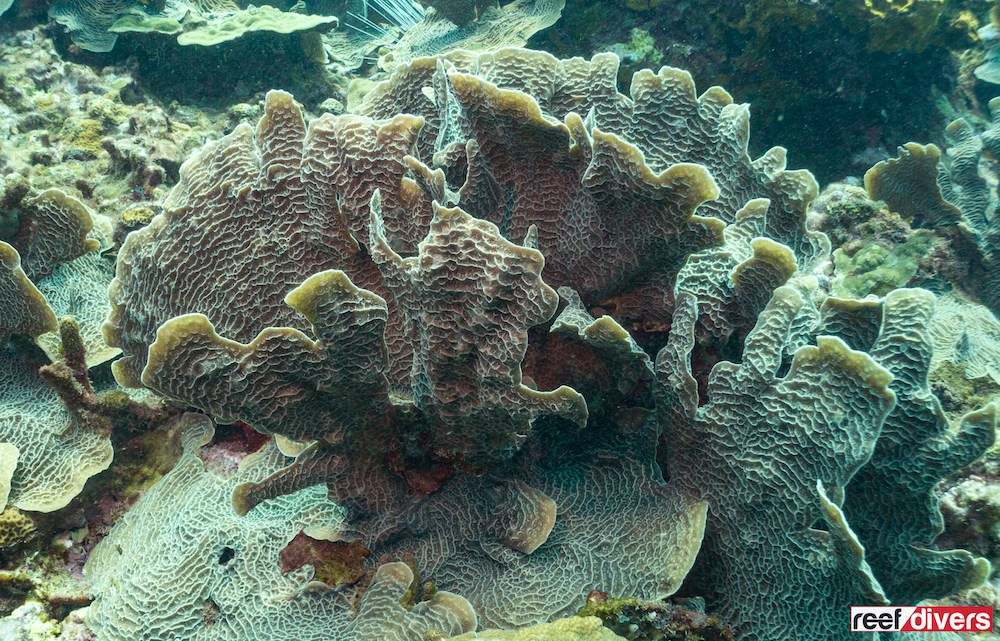
5. Agaricia agaricites – Lettuce Coral
Agaricia agaricities is a common Caribbean species that grows into thick encrusting plates. Colonies can have thick short blades or irregular projections and there will be corallites on both sides of the blade.
Corallites are aligned in neat rows inside long meandering valleys. Ridges intersect and can close around rows of corallites. The rows are fluid with soft corners becoming thinner near the top.
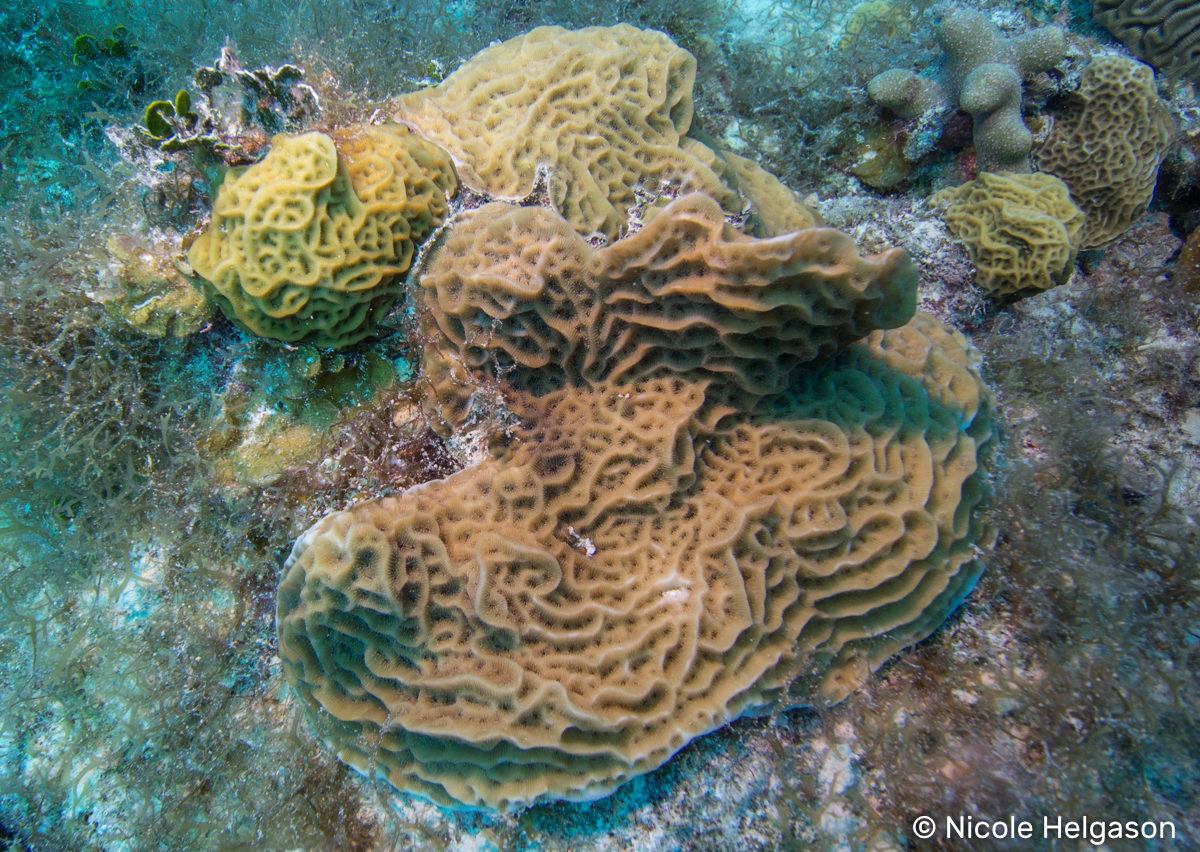
6. Agaricia humilis – Low Relief Lettuce Coral
Agaricia humilis is very similar in appearance to A. agaricities and some scientist believe the humilis growth form is just juvenile colonies of A. agaricities. But for the sake of telling the two apart, humilis corals have pointed ridges that comes to sharp turns, compared to agaricites which have more fluid squiggly lines.
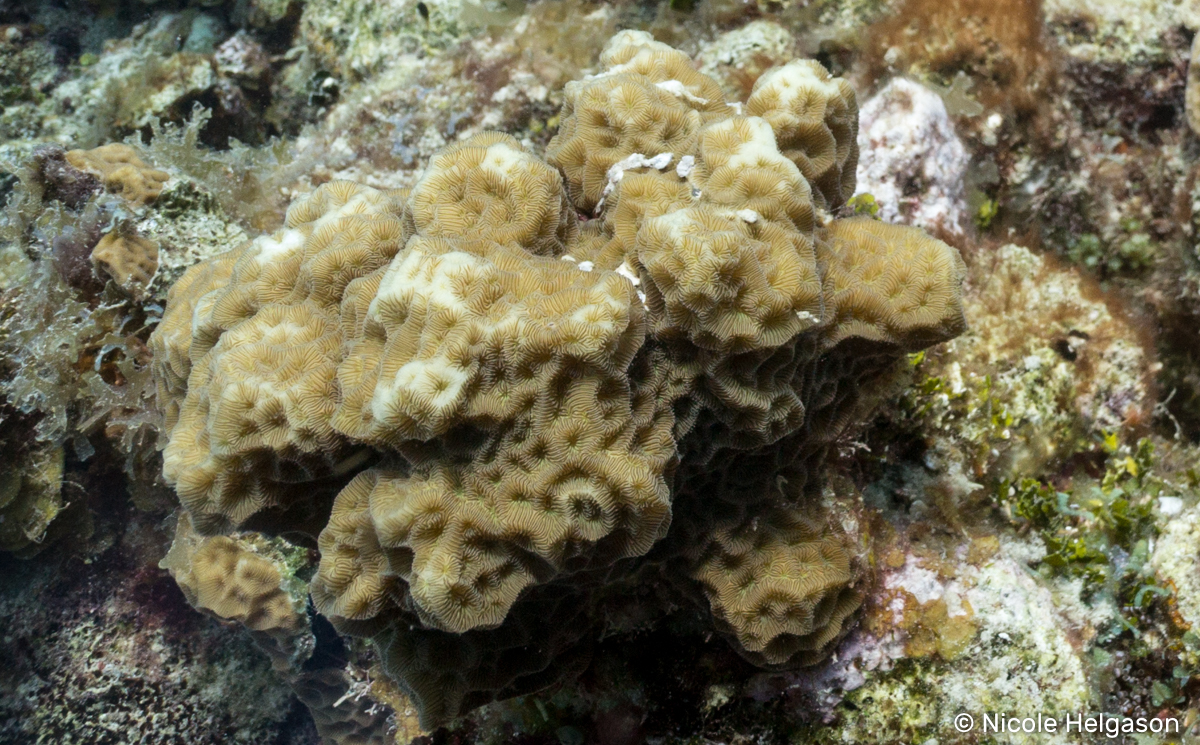
Agaricia definitions were taken from AGRRA identification methods. Available online.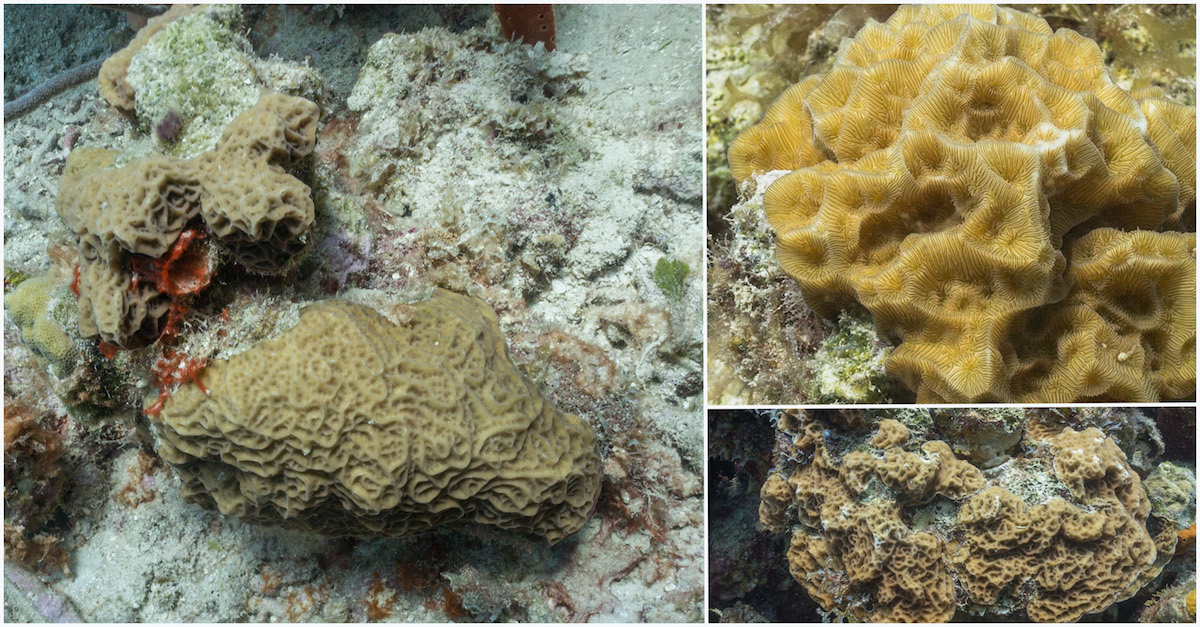
For easy quick access to this quick guide save the graphic below on your phone.
